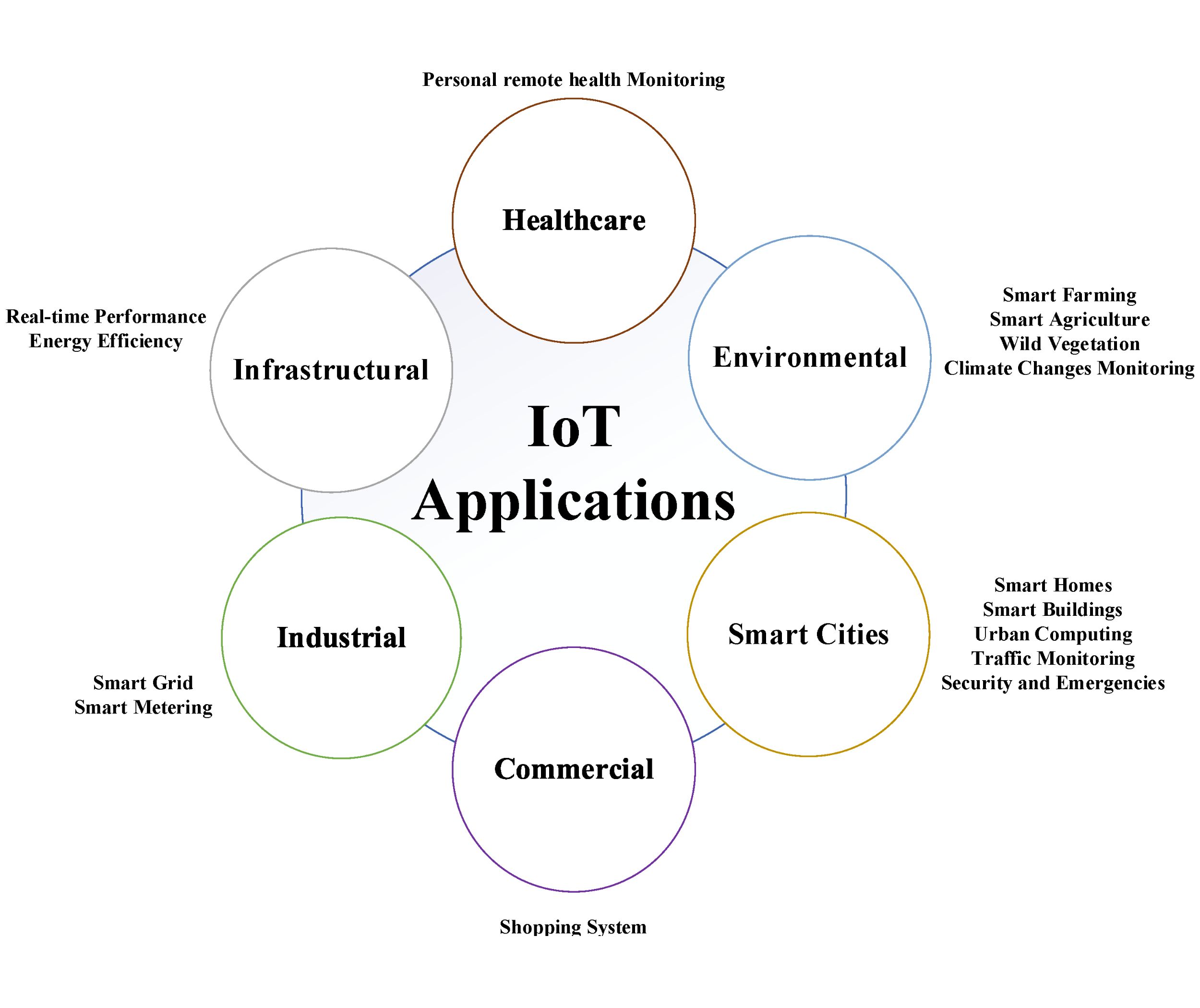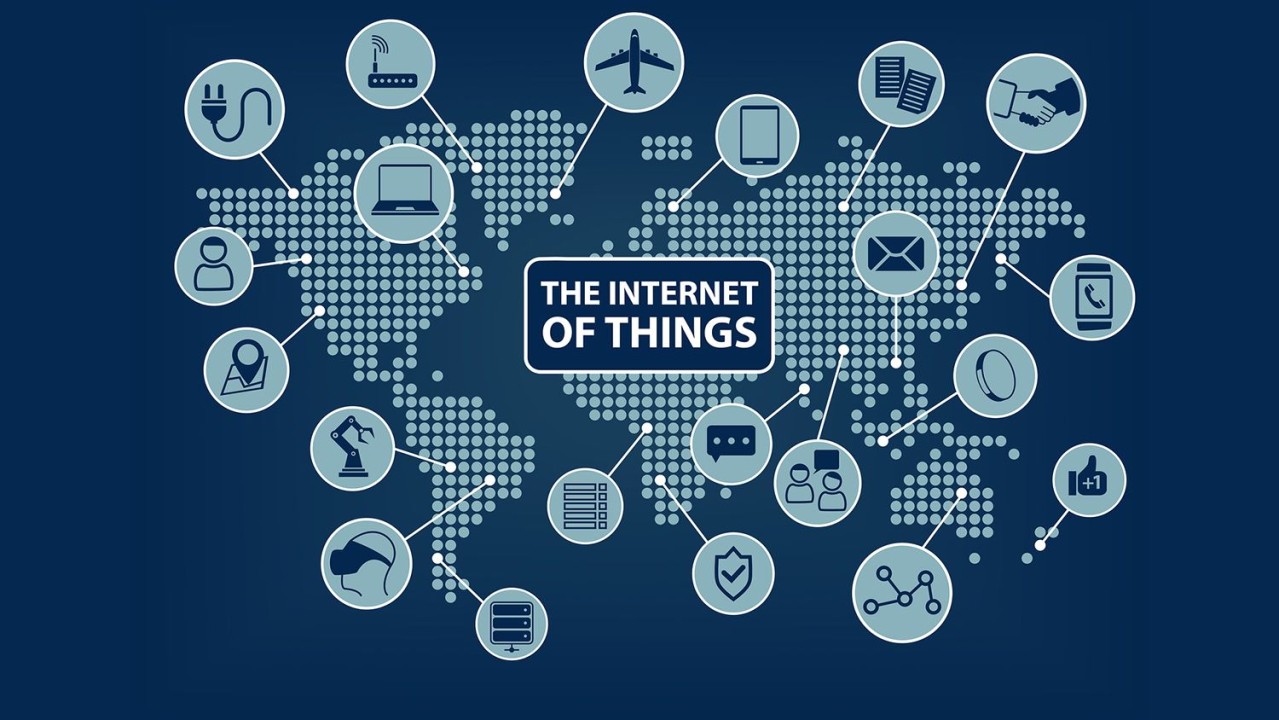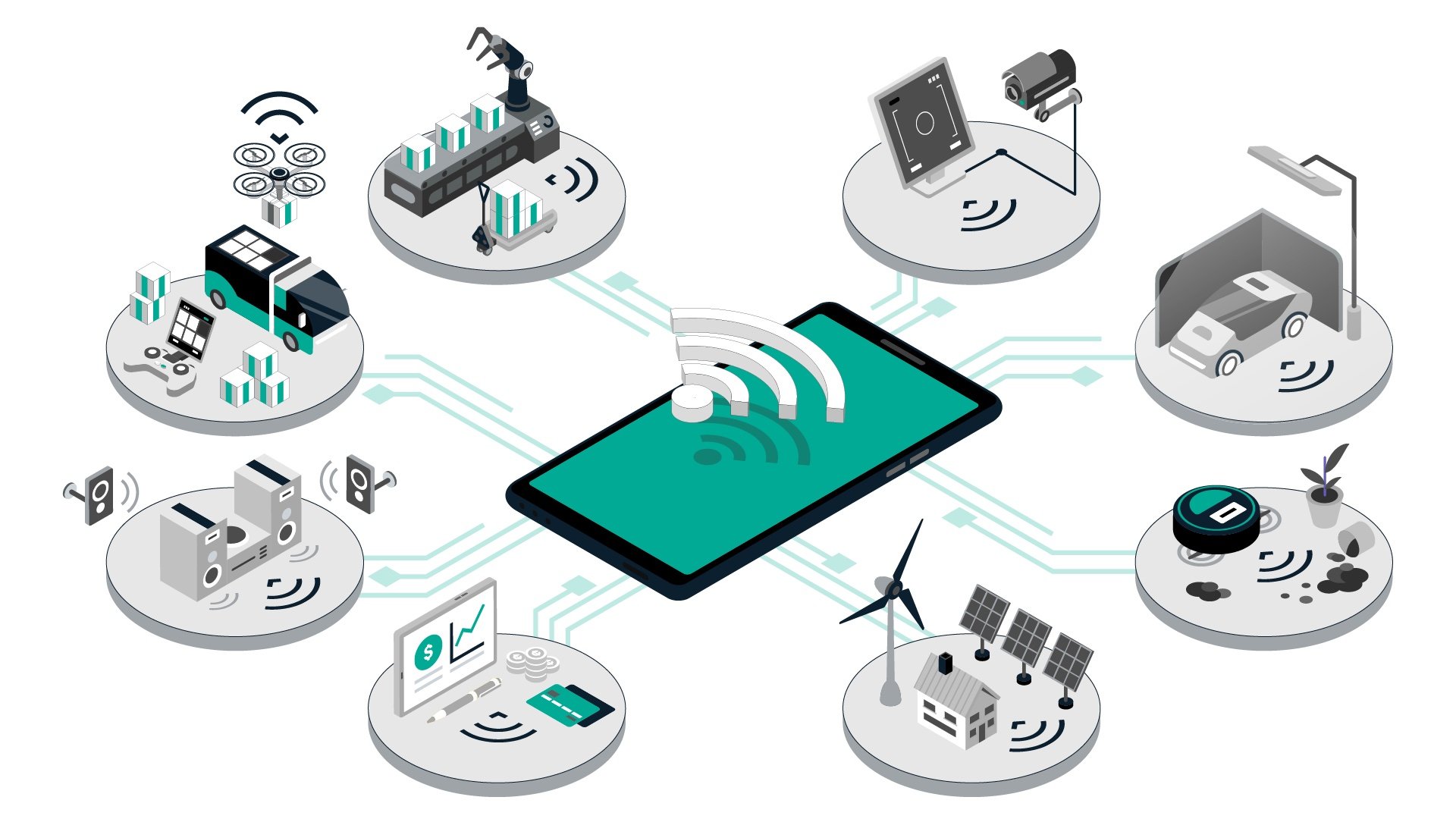Introduction
The world of technology is constantly evolving, bringing forth innovative solutions and advancements that shape various industries. One such development in the realm of the Internet of Things (IoT) is Narrowband IoT (Nb IoT), a wireless communication technology designed specifically for connecting low-power devices efficiently on a wide scale.
Nb IoT addresses the need for reliable and cost-effective connectivity for a vast array of applications, ranging from smart cities and agriculture to healthcare and transportation. With its ability to support a massive number of devices, operate in hard-to-reach areas, and provide long battery life, Nb IoT has gained significant attention in recent years.
With the increasing demand for IoT devices and services, the industry has been searching for a specialized solution that can offer wide coverage, low power consumption, and secure connectivity. Nb IoT emerged as a compelling option, providing a robust network infrastructure for various IoT applications.
In this article, we will delve into the world of Narrowband IoT, exploring its fundamental principles, capabilities, advantages, applications, and future prospects. By understanding the essence of Nb IoT, you will grasp its potential implications in the realm of IoT and how it can revolutionize various industries.
Definition of Nb IoT
Narrowband IoT (Nb IoT) is a low-power wide area network (LPWAN) technology that enables efficient and cost-effective connectivity for a massive number of IoT devices. It utilizes existing cellular infrastructure to provide a dedicated network for IoT devices, allowing them to communicate seamlessly over long distances and penetrate deep into buildings.
Nb IoT operates in the licensed spectrum, ensuring secure and reliable connectivity for IoT applications. It leverages narrowband radio frequencies to transmit small packets of data, optimizing power consumption and extending battery life for connected devices. This makes Nb IoT ideal for Internet of Things deployments that require long-lasting battery-powered devices and connectivity in remote or hard-to-reach areas.
Unlike traditional cellular networks, Nb IoT focuses on providing a low data rate, making it highly efficient and cost-effective for IoT applications. It offers excellent coverage, enabling devices to connect even in areas with weak signal strength. This coverage is achieved by utilizing band
How does Nb IoT work?
Narrowband IoT (Nb IoT) works by utilizing existing cellular infrastructure to establish a dedicated network for IoT devices. This network operates in the licensed spectrum, providing secure and reliable connectivity for various IoT applications. Let’s delve into the technical workings of Nb IoT to understand how it enables efficient communication between devices.
Nb IoT utilizes the licensed spectrum to transmit data over narrowband frequencies, which allows for longer range and better penetration through obstacles compared to traditional cellular networks. It uses resource blocks to allocate bandwidth to devices, enabling multiple devices to share the same frequency band simultaneously.
One of the key advantages of Nb IoT is its ability to support massive device connectivity. It achieves this by using a hierarchical structure, dividing connected devices into different groups. Each group is assigned a specific time slot, allowing devices within that group to take turns transmitting their data. This approach ensures an efficient use of the allocated bandwidth and minimizes collisions between devices.
In addition, Nb IoT incorporates power-saving mechanisms to optimize battery life for connected devices. Devices in idle mode periodically wake up to check for incoming messages or commands and then return to sleep mode to conserve energy. This sleep/wake cycle allows devices to operate on battery power for years without requiring frequent replacements or recharging.
Furthermore, Nb IoT supports two operation modes: in-band and guard band. In the in-band mode, Nb IoT coexists with existing cellular services in the same frequency band by sharing the resources. On the other hand, the guard band mode utilizes unused frequency bands between existing cellular channels to avoid interference, providing a dedicated spectrum for Nb IoT connectivity.
Overall, Nb IoT leverages its unique technical features, including narrowband frequencies, resource block allocation, hierarchical structure, power-saving mechanisms, and operation modes, to provide efficient and scalable connectivity for IoT devices in a cost-effective manner.
Advantages of Nb IoT
Narrowband IoT (Nb IoT) offers numerous advantages that make it an attractive choice for IoT deployments. Let’s explore some of the key benefits of Nb IoT and how they contribute to its growing popularity in the industry.
1. Excellent Coverage: Nb IoT provides excellent coverage, even in areas with weak signal strength or deep indoor penetration. This allows devices to stay connected reliably, making it suitable for applications in remote or hard-to-reach locations.
2. Low Power Consumption: Nb IoT is designed to operate with low power consumption, allowing devices to operate for extended periods on battery power. This is critical for IoT devices that need to function for years without the need for frequent battery replacements or recharging.
3. Cost-effective Solution: Nb IoT offers a cost-effective connectivity solution for IoT deployments. It utilizes existing cellular infrastructure, eliminating the need for building a separate network infrastructure. This reduces deployment costs and makes it a viable option for large-scale IoT implementations.
4. Secure Connectivity: As Nb IoT operates on licensed spectrum, it provides a secure and reliable connection for IoT devices. This helps protect sensitive data transmitted between devices and ensures the integrity of the network infrastructure.
5. Scalable Deployment: Nb IoT supports a massive number of devices connected to the network, making it highly scalable. This scalability enables the expansion of IoT deployments without compromising the performance or stability of the network.
6. Flexibility: Nb IoT offers deployment flexibility with two operation modes: in-band and guard band. This allows it to coexist with existing cellular services or utilize unused frequency bands, depending on the specific requirements of the deployment.
7. Integration with Existing Systems: Nb IoT can seamlessly integrate with existing systems and platforms, allowing businesses to leverage their current infrastructure investments. This makes the adoption of Nb IoT more accessible and cost-effective for organizations.
With its wide coverage, low power consumption, cost-effectiveness, security, scalability, flexibility, and integration capabilities, Nb IoT proves to be a compelling choice for various IoT applications, providing a solid foundation for the growth of the Internet of Things technology.
Applications of Nb IoT
Narrowband IoT (Nb IoT) has revolutionized a wide range of industries by offering reliable and cost-effective connectivity solutions for IoT applications. Let’s explore some of the key areas where Nb IoT is being applied and the benefits it brings to each sector.
1. Smart Cities: Nb IoT enables cities to become smarter and more efficient by connecting various devices and systems. It facilitates smart parking solutions, waste management systems, environmental monitoring, intelligent street lighting, and water management applications. Nb IoT helps cities optimize resource utilization, improve sustainability, and enhance the overall quality of life for residents.
2. Agriculture: In the agriculture sector, Nb IoT plays a crucial role in precision farming. It enables farmers to monitor soil moisture levels, temperature, and humidity, preventing overwatering and significantly reducing water consumption. Nb IoT also supports the tracking and monitoring of livestock, ensuring their well-being and enabling more efficient farm management.
3. Healthcare: Nb IoT revolutionizes healthcare by providing remote patient monitoring and telemedicine solutions. It allows continuous monitoring of patients’ vital signs, such as heart rate, blood pressure, and glucose levels, enabling early detection of potential health issues and immediate intervention. Nb IoT also facilitates the tracking and monitoring of medical equipment, ensuring their availability and proper maintenance.
4. Asset Tracking: Nb IoT offers precise and real-time asset tracking capabilities, making it ideal for logistics and supply chain management. It enables companies to track the location, condition, and status of their assets, including goods, vehicles, and containers. This improves operational efficiency, reduces losses, and enhances the overall visibility and control of the supply chain.
5. Environmental Monitoring: Nb IoT helps monitor and manage environmental conditions for various applications. It enables real-time monitoring of air quality, water quality, and noise levels, supporting environmental protection efforts. Nb IoT assists in early detection of environmental hazards, ensuring timely action and facilitating sustainable development.
6. Utilities: Nb IoT plays a significant role in optimizing utility services. It enables remote monitoring and control of electric grids, water networks, and gas systems, facilitating efficient resource utilization and maintenance. Nb IoT assists in detecting leaks, minimizing downtime, and reducing overall utility costs.
7. Industrial IoT: In the industrial sector, Nb IoT enables smart manufacturing and predictive maintenance solutions. It facilitates real-time monitoring and optimization of equipment performance, ensuring efficient operations and preventing costly breakdowns. Nb IoT strengthens connectivity and communication within industrial settings, enabling seamless integration between machines and systems.
These applications highlight the versatility and impact of Nb IoT across various industries. With its reliable and cost-effective connectivity, Nb IoT continues to drive innovation and transform the way businesses and organizations operate, paving the way for a more connected and efficient future.
Comparison with other IoT technologies
When it comes to IoT connectivity solutions, several technologies compete for attention. Let’s compare Narrowband IoT (Nb IoT) with other IoT technologies to understand its unique advantages and characteristics.
1. Wi-Fi: Wi-Fi is a widely used technology for local area network connectivity. While Wi-Fi provides high data transfer rates and is suitable for applications within a limited range, it falls short in terms of coverage and power consumption. Nb IoT, on the other hand, offers longer range and better penetration, making it more suitable for applications that require wide coverage and low power consumption.
2. Bluetooth: Bluetooth is commonly used for short-range wireless communication between devices. It excels in connecting devices in close proximity, such as headphones or speakers. However, Bluetooth has limited range and is not efficient for applications that require long-range connectivity or support for a massive number of devices. Nb IoT, with its extended range and scalability, is better suited for IoT deployments that require wide coverage and connectivity of numerous devices.
3. Zigbee: Zigbee is a low-power wireless communication standard designed for home automation and control applications. It operates on the unlicensed frequency band and is suitable for applications that require low to moderate data rates. While Zigbee offers low power consumption and is ideal for home automation, it has a more limited range compared to Nb IoT. Nb IoT provides wider coverage and better penetration, making it more suitable for outdoor and industrial applications.
4. LoRaWAN: LoRaWAN is another LPWAN technology like Nb IoT. Both technologies offer long-range connectivity and low power consumption. However, there are a few differences. Nb IoT operates in licensed spectrum, ensuring better security and dedicated network infrastructure. On the other hand, LoRaWAN operates in unlicensed spectrum, offering more flexibility but potentially facing higher interference. The choice between Nb IoT and LoRaWAN depends on the specific requirements of the application and the available network infrastructure.
5. Cellular IoT: Cellular IoT technologies, such as 4G LTE and 5G, offer high-speed connectivity and wide coverage. They provide excellent data transfer rates and support a large number of devices. However, cellular IoT consumes more power compared to Nb IoT and is more expensive to deploy. Nb IoT, with its focus on low power consumption and cost-effectiveness, is more suitable for applications that prioritize long battery life and cost efficiency.
In summary, each IoT technology has its own strengths and weaknesses, catering to different use cases and requirements. Narrowband IoT shines in terms of wide coverage, low power consumption, scalability, and cost-effectiveness, making it a compelling choice for a range of IoT applications, especially those that require long battery life, extensive coverage, and cost-effective deployment.
Challenges and Limitations of Nb IoT
While Narrowband IoT (Nb IoT) offers numerous advantages for IoT deployments, it is important to consider the challenges and limitations associated with this technology. Understanding these factors helps in making informed decisions and addressing potential obstacles. Let’s explore some of the key challenges and limitations of Nb IoT.
1. Limited Bandwidth: Nb IoT operates on narrowband frequencies, which results in limited bandwidth compared to other IoT technologies. This restricts the amount of data that can be transmitted, making it less suitable for applications that require high-speed data transfer or large data payloads.
2. Latency: The nature of Nb IoT’s low-power, wide area network architecture can lead to increased latency. This latency can pose challenges for applications that require real-time data processing and immediate response times, such as certain industrial automation or autonomous vehicle applications.
3. Interference: As Nb IoT operates in licensed spectrum, interference from other cellular services or neighboring networks can be a concern. This interference can impact the quality of the connection and potentially degrade the overall performance of Nb IoT deployments.
4. Deployment Costs: While Nb IoT can offer cost-effective connectivity in the long run, there may be initial deployment costs associated with building or upgrading existing cellular infrastructure to support Nb IoT. This can pose challenges for organizations with budget constraints or limited resources.
5. Device Compatibility: Nb IoT requires compatible hardware and chipset support in devices to enable connectivity. This may pose challenges for existing devices that are not designed or equipped to work with Nb IoT, requiring additional investments in hardware upgrades or replacements.
6. Network Coverage: While Nb IoT provides excellent coverage, it may still face limitations in certain areas, particularly in remote rural areas or deep indoor locations. Ensuring adequate network coverage in these areas may require additional infrastructure investments or alternative network deployment strategies.
7. Standardization: As Nb IoT is a relatively new technology, there may be variations in implementation and interoperability among different vendors and service providers. This can pose challenges in terms of compatibility and seamless integration of Nb IoT devices and services.
Despite these challenges and limitations, Nb IoT continues to evolve and improve, addressing the needs of various IoT applications. As the technology matures, it is likely that many of these challenges will be mitigated, allowing Nb IoT to further expand its potential and impact in the IoT ecosystem.
Future of Nb IoT
The future of Narrowband IoT (Nb IoT) holds tremendous potential as the technology continues to evolve and expand its presence in the IoT landscape. Let’s explore some key aspects that shape the future of Nb IoT.
1. Continued Adoption: Nb IoT adoption is expected to increase significantly in the coming years as more businesses and industries recognize its benefits. The growing demand for low-power, wide area connectivity for IoT applications will drive the adoption of Nb IoT as a cost-effective and efficient solution.
2. Standardization and Interoperability: Standardization efforts will play a crucial role in the future of Nb IoT, ensuring interoperability among different devices, networks, and service providers. The development of common standards will simplify device integration, deployment, and management, fostering a more cohesive and scalable ecosystem.
3. Network Expansion: Nb IoT network coverage will continue to expand, reaching more remote areas and providing reliable connectivity in previously underserved locations. This expansion will support the growth of applications in industries such as agriculture, energy, and transportation, enabling IoT deployments in previously inaccessible areas.
4. Enhanced Performance: Future advancements in Nb IoT technology will focus on improving performance aspects such as data rate, latency, and network capacity. This will enable the development of new applications requiring higher data transfer rates or real-time responses, expanding the scope of use cases for Nb IoT.
5. Integration with 5G: The integration of Nb IoT with 5G networks will further enhance its capabilities. The low power consumption and wide coverage of Nb IoT combined with the high data transfer rates and low latency of 5G will create powerful synergies, enabling more sophisticated and advanced IoT applications.
6. Innovation and New Applications: The future of Nb IoT will be driven by ongoing innovation and the emergence of new applications. Industries will continue to explore and leverage Nb IoT for various use cases, such as asset tracking, environmental monitoring, healthcare, and more. As the technology matures, unique and transformative applications will drive its widespread adoption.
7. Integration into Existing Infrastructure: Nb IoT will continue to integrate seamlessly into existing infrastructure, allowing businesses to leverage their current investments. This integration will foster the development of smart cities, industrial automation, and other IoT deployments, driving efficiency and improving overall operational capabilities.
The future of Nb IoT is bright, with expanding adoption, improved performance, increased interoperability, and integration with other technologies. As the IoT landscape continues to evolve, Nb IoT will play a significant role in enabling the seamless connectivity of a vast array of devices, driving innovation, and powering the digital transformation across various industries.
Conclusion
Narrowband IoT (Nb IoT) is a game-changing technology that has revolutionized the world of IoT connectivity. With its wide coverage, low power consumption, cost-effectiveness, and scalability, Nb IoT offers significant advantages for a wide range of IoT applications.
In this article, we have explored the definition and working principles of Nb IoT, highlighting its unique features such as narrowband frequencies, resource block allocation, hierarchical structure, and power-saving mechanisms. We have also discussed the advantages of Nb IoT, including excellent coverage, low power consumption, cost-effectiveness, secure connectivity, scalability, flexibility, and integration capabilities.
Furthermore, we have examined the applications of Nb IoT across industries such as smart cities, agriculture, healthcare, asset tracking, environmental monitoring, utilities, and industrial IoT. Nb IoT has proven to be a transformative technology, enabling efficient solutions in these sectors and driving innovation and sustainability.
While Nb IoT offers numerous benefits, it is important to consider the challenges and limitations associated with this technology. Factors such as limited bandwidth, latency, interference, deployment costs, device compatibility, network coverage, and standardization efforts should be carefully considered in implementing Nb IoT solutions.
Looking towards the future, Nb IoT holds tremendous promise. The continued adoption of Nb IoT, advancements in technology and standardization, network expansion, enhanced performance, integration with 5G, and the development of new applications will shape the future of Nb IoT and drive its widespread adoption and impact across industries.
In conclusion, Nb IoT has emerged as a powerful connectivity solution for the Internet of Things, offering reliable, cost-effective, and scalable connectivity. With its advantages, versatility, and potential for innovation, Nb IoT is set to play a crucial role in shaping the connected future and driving the digital transformation of various industries.

























